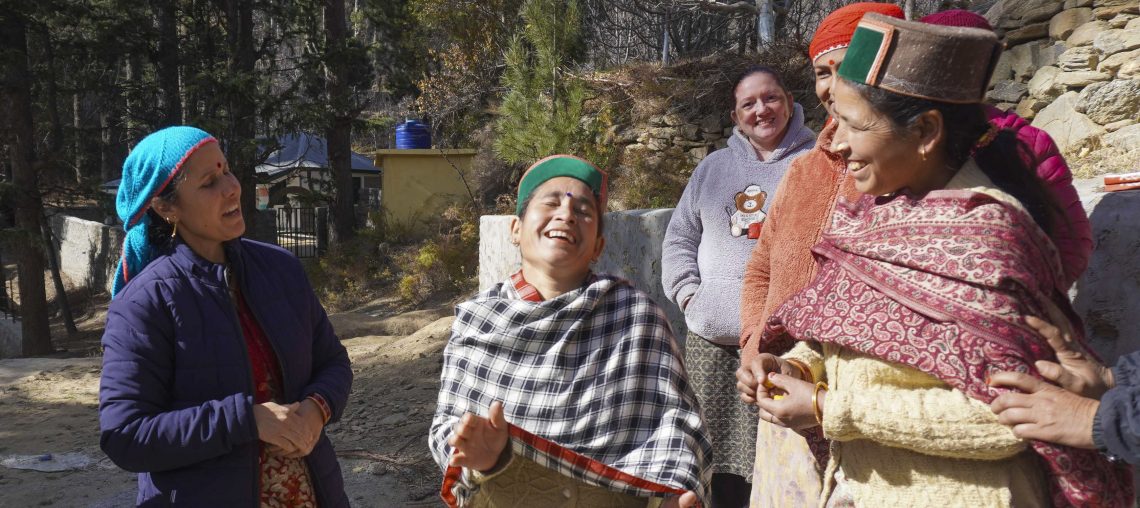
The hand loom weavers of ‘Roshmolyo Chine’- crafting the future of Kinnaur
Attractive and cosy, Kinnauri woolens are painstakingly woven by skilled hands, each item taking time and effort to create. This story gives a glimpse into the lives of the women of Roshmolyo Chine, a village-level collective of Self-help groups from Kalpa, Kinnaur in the Himalayan state of Himachal Pradesh. It tells of the entrepreneurial journey embarked on by these women, while simultaneously preserving the age-old craft of hand loom weaving.
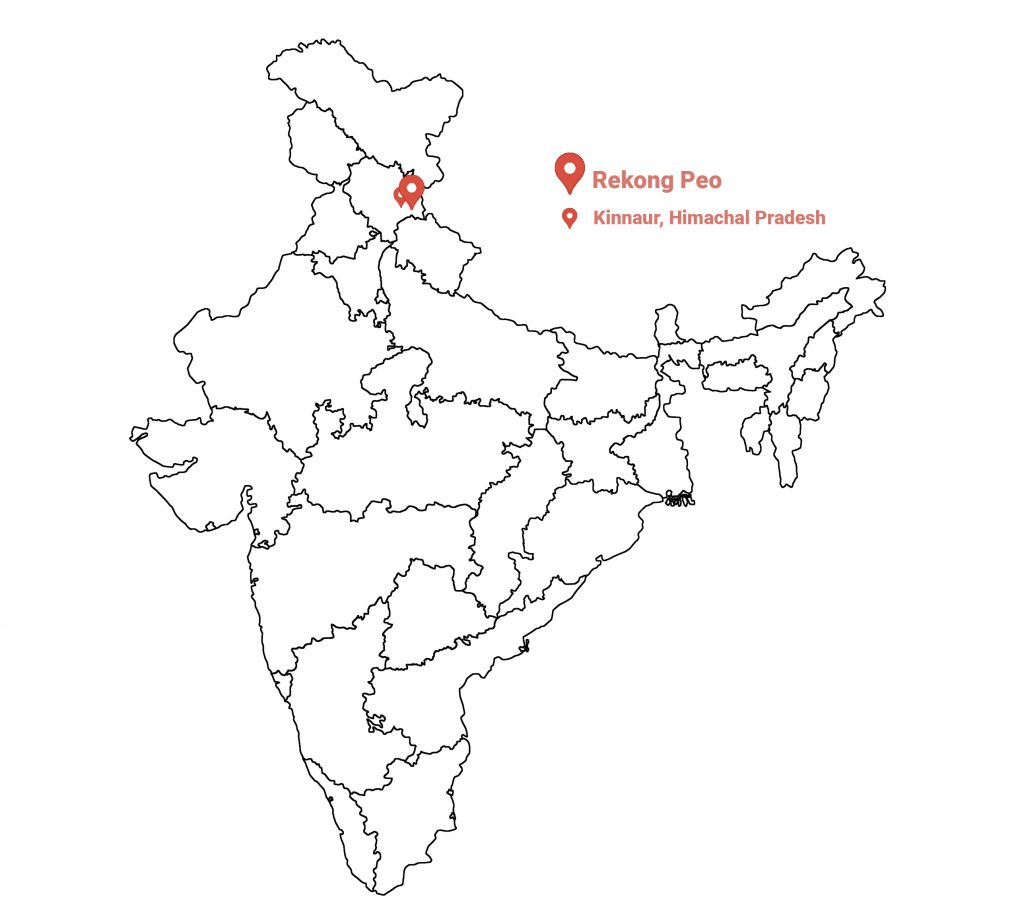
Storyteller : Pramiti Negi
Himal Prakriti Fellow
Rekong Peo, Kinnaur District,
Himachal Pradesh
Read the story in Hindi

Kalpa is less than 5 km from Reckong Peo, the district headquarters of Kinnaur, in the Himalayan state of Himachal Pradesh. This picturesque village is a hot spot amongst tourists who visit Kinnaur.

It is also home to the assiduous women of ‘Roshmolye Chine’– a gram sangathan (village level body) of six self-help groups (SHGs). ‘Chine’ is the ancient name of Kalpa and ‘Roshmolye’ is a word often attributed to Kalpa in old folk songs.
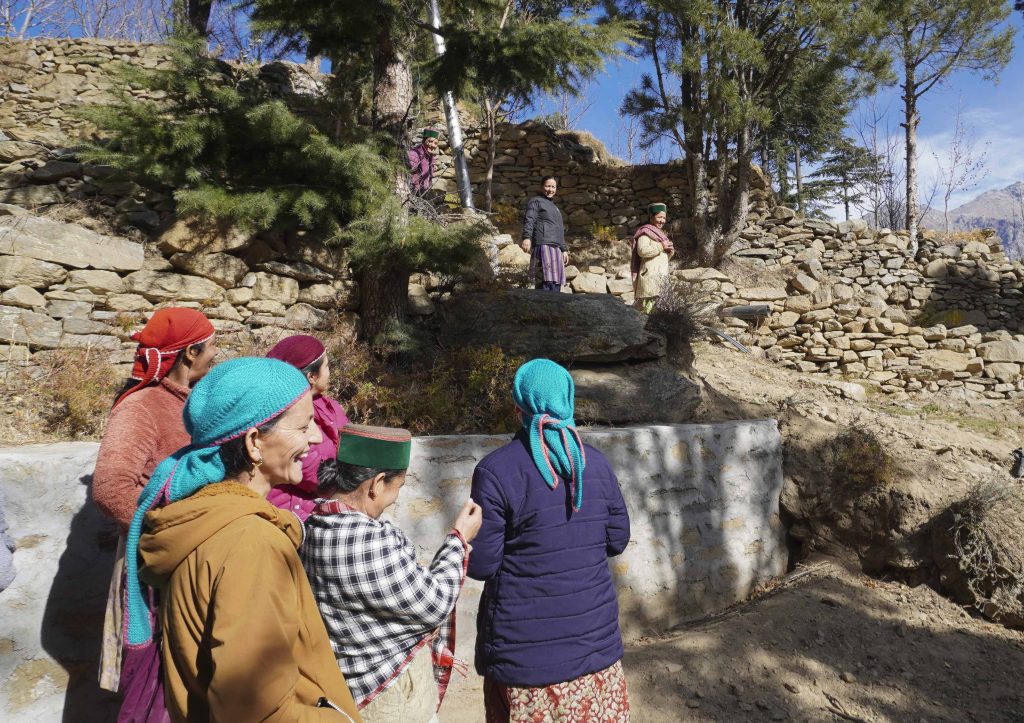
Each SHG in Roshmolye Chine has 5 to 6 members engaged in production and selling of Kinnauri woollens and food products such as dry fruits, pickles and apricot oil.
Their last meeting in 2023 welcomed 3 new members who left their previous group to become member of Roshmolyo Chine – citing this group’s dexterity and efficiency in availing opportunities and government schemes.
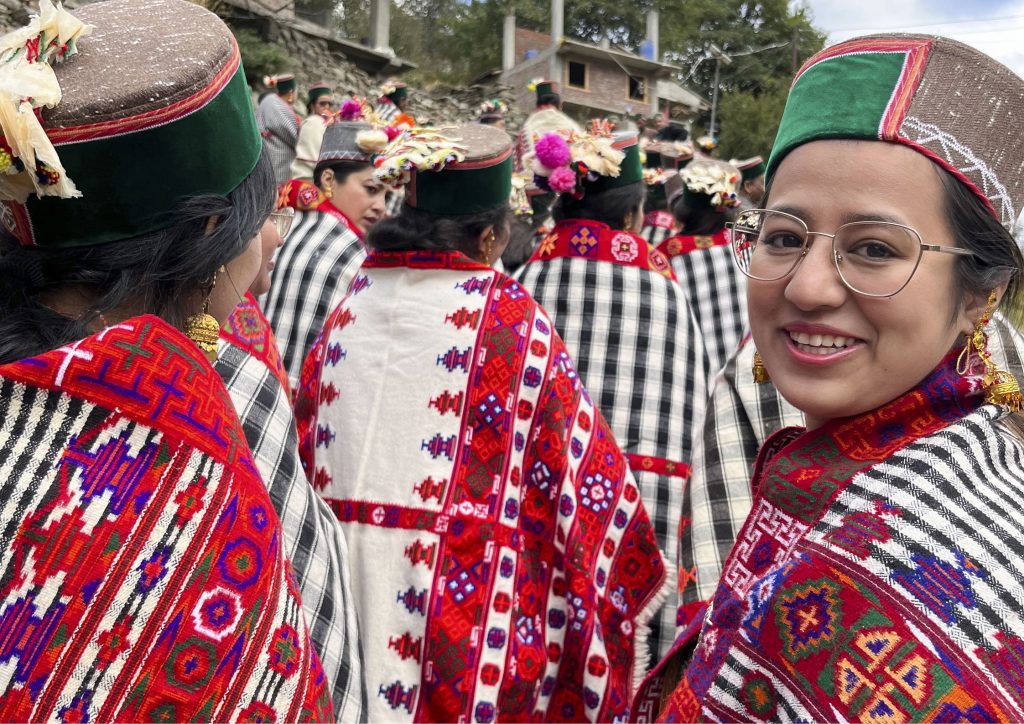
Work such as making pickles, and the Tekma (an ornamental piece worn on Kinnauri cap) is seasonal in these groups. Weaving, however, continues throughout the year and most of the members are occupied in the weaving of Kinnauri woolens such as the Chaanli and Lingchey, (different varieties of Shawls) and the Golband (mufflers). This is done on their traditional hand looms known as the Khaddi.
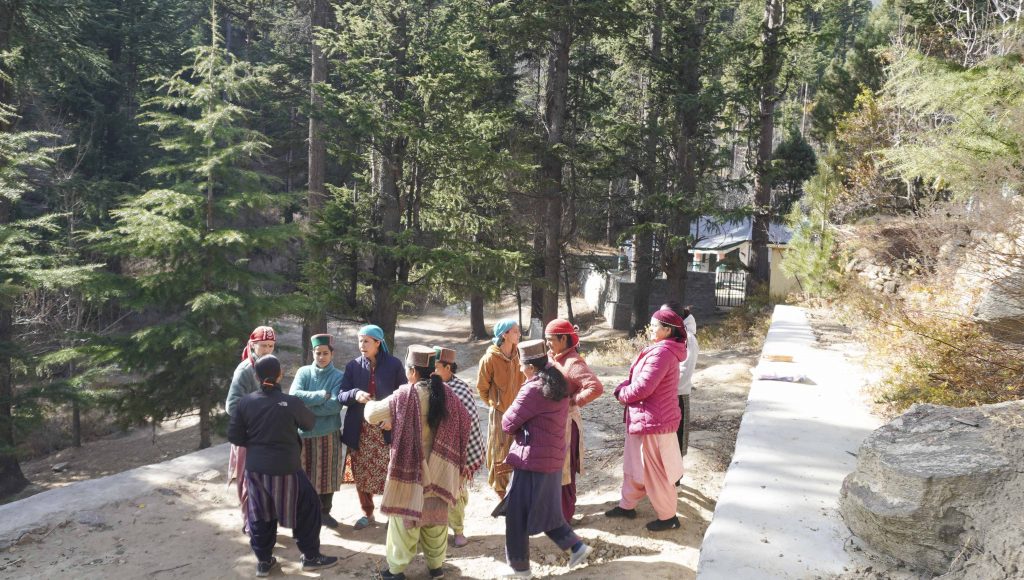
Members of Roshmolye Chiney live around the area called ‘Rang Champo’ in Kalpa. A common meeting point for the women is near the Government Primary School and discussions take place outdoors under the shade of trees. While the meetings are more frequent in summer, get togethers come to a halt after snowfall in winter.
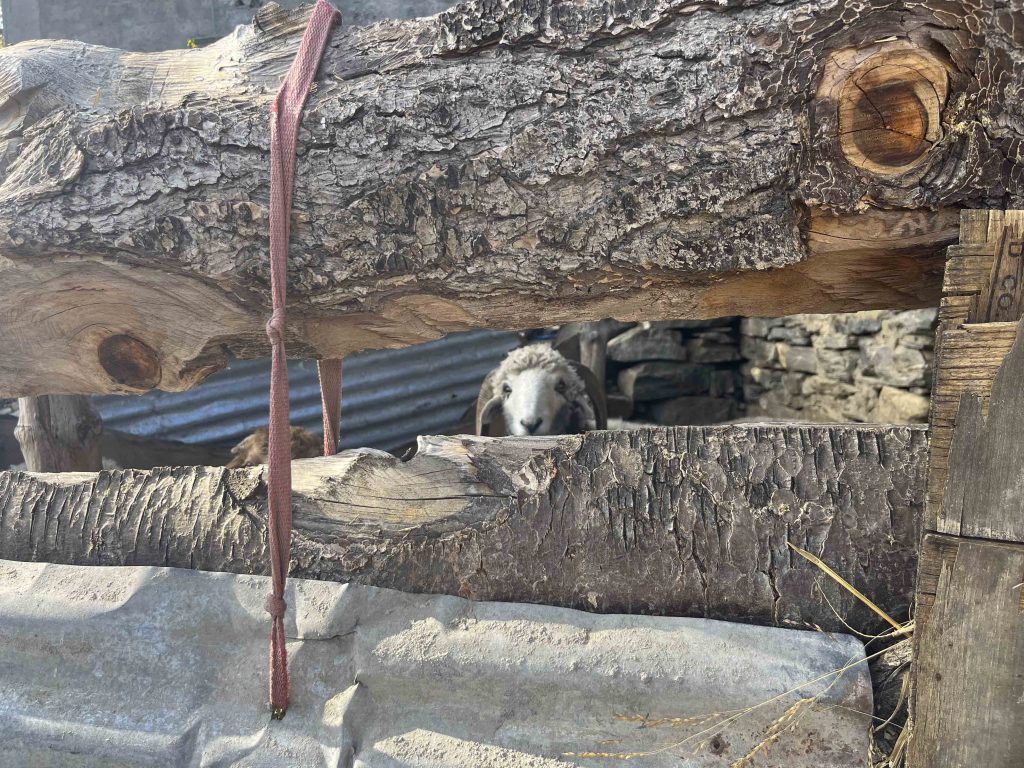
Sheep rearing was once the mainstay livelihood of the region. Today, this has been replaced by apple farming. There are but a few shepherds remaining in Kalpa and the woman of Roshmolyo Chine rely on the local market for their raw materials.
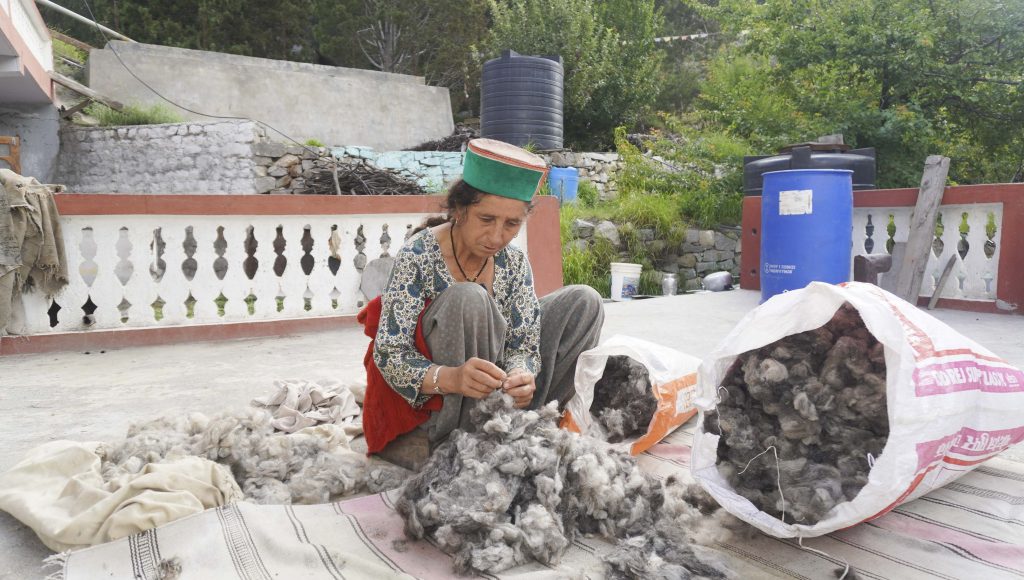
The weavers of Roshmolyo Chine have set up hand looms in their houses and work individually on articles that are mostly pre-ordered by local customers. On average, a woman weaves one or two woolen articles a month. A Kinnauri shawl sells for around 25,000 INR and the price increases depending on intricacies of the design.

Laxmi Negi is the president of Roshmolye Chine and she takes great pride in the articles that she weaves. Laxmi helps the women in her group to fill out forms and is quick to learn about new government schemes and subsidies. Laxmi’s husband and son have temporarily migrated to the city for employment and she lives in the village with her daughter. Laxmi learned weaving only a few years back, and it serves as a means of additional income for her family.

Intricate geometrical designs that are painstakingly crafted and require expertise are woven into various garments. Sheep wool is used in its natural state without dyeing. The patterns are made in bold colours of red, royal blue, green, orange and white using Cashmillon wool (pre-dyed synthetic wool) that can be readily bought from the market.

Designs are influenced by the local beliefs and customs of Kinnaur. For instance, Buddhism, Hinduism and local beliefs (animism, naturism and ancestor worship) coexist in regions across Kinnaur. Religious motifs such as Chorten (Buddhist Stupa) and the Hindu Swastika can blend seamlessly into a single pattern.

Ranjana Negi comes from a family with a long line of skilled weavers. She learned weaving when she was a young girl. After getting married her mother-in-law and father-in-law helped her brush up on her weaving skills.
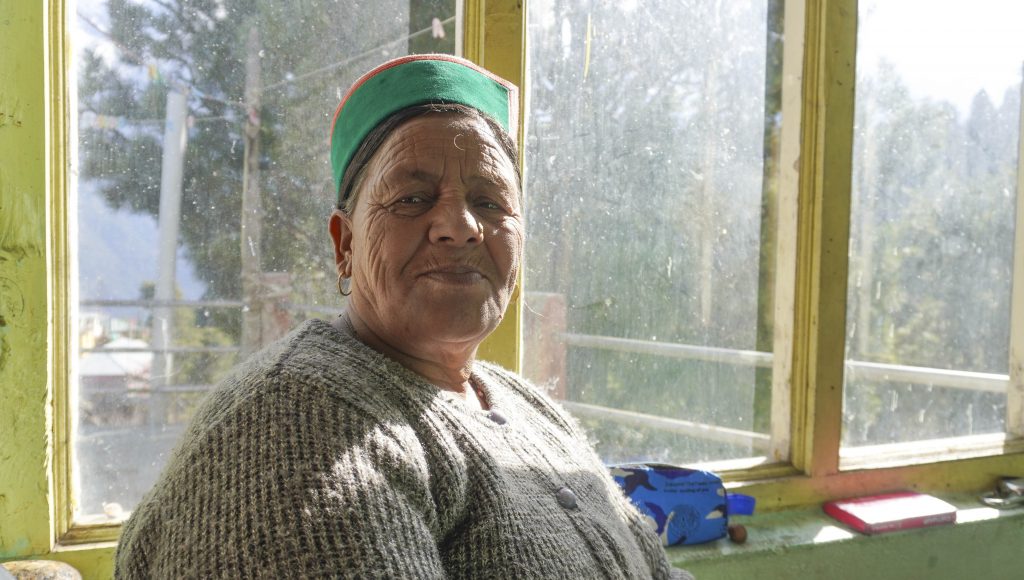
Her in-laws do not weave any longer due to their old age and poor health. Ranjana has been part of Roshmolyo Chine since its inception in 2019.
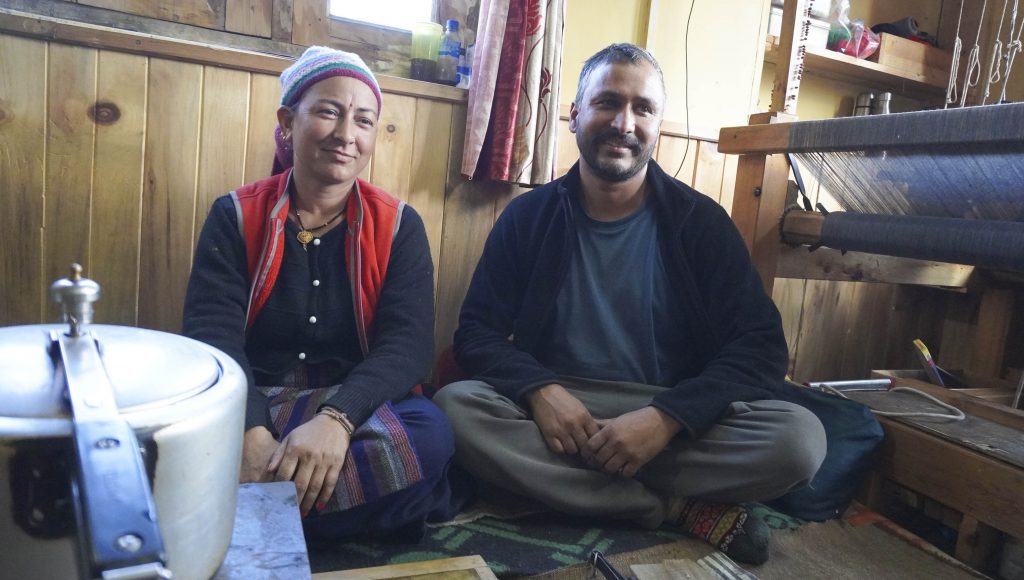
Minta Devi is one of the three women who recently joined Roshmolyo Chine. Fifteen years ago after getting married, she learnt weaving from her neighbour. She later taught weaving to her husband as well. Minta Devi’s husband is a carpenter by profession.
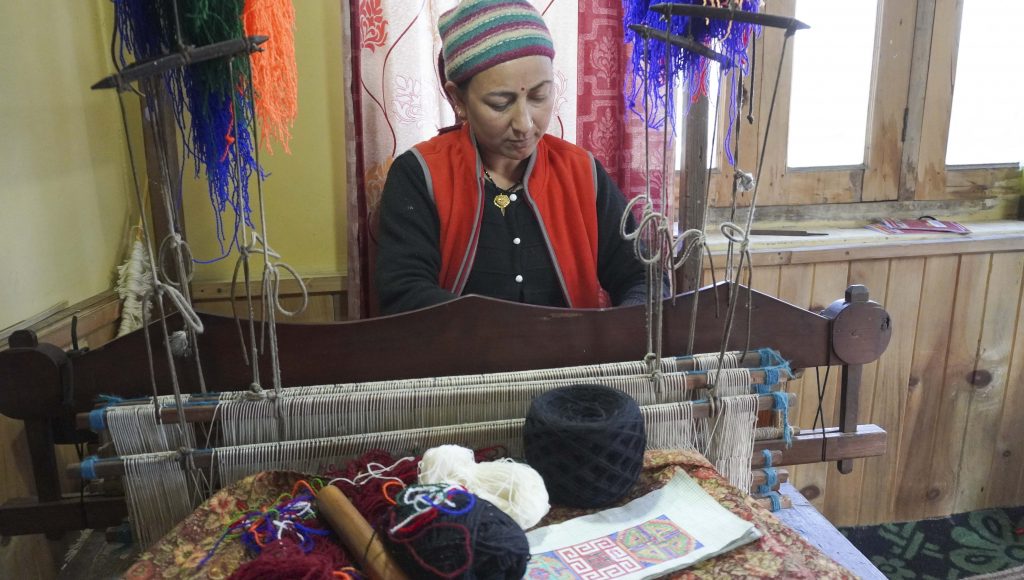
The husband-wife duo has divided their work strategically. Minta Devi weaves intricate motifs and designs using a variety of colours while her husband weaves garments like the Dodu (wrap-around) that is woven with a single colour and without designs, and therefore require less skills.

Minta Devi has set up her hand loom in her Panthang, the most important place in the house for the people of Kinnaur. It is where the fireplace is located and it is in this room that family members cook, dine, sit and relax, along with entertaining important guests.

Women of the SHGs work collectively to set up stalls during local fairs and festivals such as the Lavi trade fair at Reckong Peo and sell their products under the banner of Roshmolye Chine. The gram sangathan is often invited to trade fairs and festivals held outside Kinnaur. The members, however, say that demand for Kinnauri woolens beyond the local market is limited.

The markets of today are overflowing with mass-produced synthetic goods. Kinnaur’s artisanal woolens are made in limited quantities and need considerable time to finish. Weaving in Kinnaur is an art form that is slowly diminishing. The skill of weaving is passed on from one generation to the next. Conventionally, the craft was limited to the artisanal group of people, supposedly lower in the social hierarchy.
Today fewer and fewer young people are learning the skill of weaving. However, it is interesting to note the role women’s self-help groups are playing in the revival of the craft. Government-run learning centers and schemes are incentivizing women from all backgrounds to learn weaving.

The opportunities for the sale of their handicrafts is limited for such village self-help groups. It would be interesting to see if they can expand their avenues of sales by targeting the tourists. They could also use their collective bargaining power to determine the market rates of both the finished product and the raw material.
Today both men and women are engaged primarily in apple farming. Roshmolyo Chine’s weaving endeavour is an inspiring community-based association to diversify the means of employment and in preserving the art of weaving in Kinnaur.
Meet the storyteller






